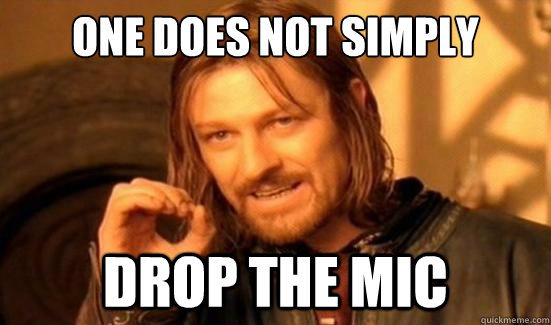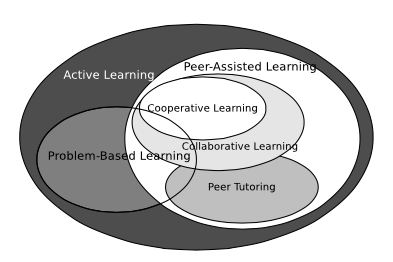Q: What a #Rhizo15 post? But Laura, I thought the course was over? Is this not true?
A: The #Rhizo15 is never over with a community like this one. #truth
Week 5 poked and prodded at the notion of community for learning, with questions like:
- How do we make sure there is always room for new and contrarian voices?
- Do we need to create a them to have a we?
- How do we cultivate a community learning ecosystem so that it continues to grow outward rather than inward?
- What does that mean for learning?
- Must rhizomatic learning be an invasive species?
In my efforts to set up my 10-week Summer courses (why I dropped off the #rhizo15 path as an “active participant” both blogging, tweeting & on the Facebook group), I thought more about how communities can enhance learning, both the informal and formal sides. As I read the #rhizo15 week 5 blog posts and thought a the questions above – it made me consider access and agency to learning – my own and others. Whether it has been a course, certificate, professional meeting or a training seminar — the best experience in learning has been the people and their contributions. The opportunities to dialog and share experiences have lent to stickier and more meaningful learning — for myself and others. There is great knowledge With regards to facilitation and instruction, I would agree with Lisa’s sentiments from week #4 where the fearless #rhizo15 leader, Dave has “chosen words, for every one of his prompts, that are very open to interpretation.” Others interpreted this prompt with metaphors and ideas, including cultivating a garden of learning/teaching, thinking about spontaneous growth, and considering lines of flight for the #rhizo15 course/community.
I agree with these sentiments for my informal learning practices. In a number of my personal learning networks and communities of practice, there are always issues of cultivating a broader network and experience for those involved with learning. It is critical to avoid the online echo chamber when surrounded by like-minded people. This notion of echos in the network vary for #rhizo15 learning community. Some believe this community provides learning support and outlets to challenge the norm, while other community interactions or experiences might be determined by an algorithm. It is important to find ways to challenge and engage the learning community to reflect upon their practice and consider contrary points of view. Sometimes it is a good idea to step back to assess the conversation and learning in the community. I think it’s healthy to have a critical eye when reviewing the participation, discussion, and contribution in the learning community. How can we evaluate and reflect this practice more in our own learning networks?
The Echo Chamber [Revisited] by @gapingvoid
In my efforts to set up my 10-week Summer courses (one of the reasons why I dropped off the #rhizo15 path as an “active participant” both blogging, tweeting & on the Facebook group for a while), I thought more about how communities can enhance learning, both the informal and formal sides. In reflecting on my own formal learning/teaching, I have always valued individual contributions and experiences shared by others. Whether it has been a course, certificate, professional meeting or a training seminar — the best experience in learning has been from the people. We typically have been prompted to respond, answer, or be involved in some sort of interaction — however the learning happens more when the group of learners actively participate, chat, and share. This got me thinking about how to develop a learning community in a formal course curriculum and consider ways to personalize the learning experience.
I like the idea of openness guided by the instructor. I enjoy finding meaning and ways to interpret the discussions; however I knew that most of my learners need directions and clear targets. This prompt encouraged ways to facilitate “openness” in my own teaching/training to revitalize a sense of exploration for my learners/participants. I want to facilitate a space that is structured “enough”; however it does make room for all voices and galvanizes my learners to contribute to include their different perspectives and experiences. How are you encouraging these type of “open” learning experiences in your courses? How are they being interpreted/received by your students?
This past Monday kicked off the Summer sessions at UNT, and I was excited to welcome my learners in #LTEC3010 (Personal Development) and #LTEC4000 (Introduction to Training and Development). Both courses guide career and professional development either as individuals or within an organization [both course syllabi are posted here, if interested]. Interestingly enough, these two different courses have a lot of similarity in understanding organizational learning and individual performance in the workplace. There is enough “structure” for our online undergraduate courses; however I have made room for research, questions, creativity, and contributions from the learners. To be intentional about community learning, there are a number of activities (e.g. discussions, research projects, etc.) and examples to encourage self-directed learning offered in each class. As per usual, I hope to model the impacts online communities of practice and professional mentoring can have on individual academic/career development, while also introducing how informal and online learning networks can support new modes for training and development.
We shall see how these learning communities develop and grow… more to share soon (I hope).









You must be logged in to post a comment.